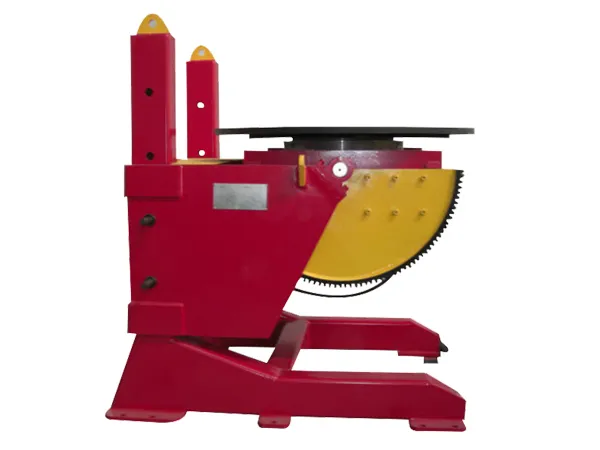A welding positioner is a mechanical device used to manipulate and hold a workpiece in the optimal position for welding. It allows welders to work more efficiently by rotating or tilting the workpiece to the desired angle, making it easier to access different areas for welding without having to reposition themselves constantly.
Welding positioners come in various shapes and sizes, ranging from small tabletop units for light-duty welding to large, heavy-duty units capable of handling massive workpieces in industrial settings. They typically consist of a base, a rotating mechanism, and a fixture to hold the workpiece securely in place. Some advanced positioners may also include tilting capabilities to achieve even more precise positioning.
Using a welding positioner can improve weld quality, increase productivity, and reduce fatigue for the welder by providing better access to the welding area and allowing for consistent weld bead placement.
Welding positioner type

Horizontal Positioners: These positioners rotate the workpiece around a horizontal axis. They are often used for welding cylindrical or round workpieces such as pipes, tanks, and vessels.
Vertical Positioners: These positioners rotate the workpiece around a vertical axis. They are suitable for welding flat or plate-like workpieces and are commonly used in industries such as shipbuilding and construction.
Headstock-Tailstock Positioners: These positioners consist of a headstock (which holds one end of the workpiece) and a tailstock (which supports the other end). They allow for rotation and tilting of the workpiece, providing greater flexibility in positioning during welding.
Turntable Positioners: Turntable positioners are like rotating platforms that can hold and rotate the workpiece. They are often used for smaller workpieces and in situations where precise rotation is required.
Manipulators: Manipulators are more complex positioners that combine vertical and horizontal movement capabilities. They can move the welding torch in multiple directions around the workpiece, allowing for welding in various positions and angles.
Automatic Welding Positioners: These positioners are equipped with automation features such as programmable controls, sensors, and robotic arms. They are used in automated welding processes where precise control and repeatability are essential.
…
For more detailed information about what a welding positioner is, click to visit: https://www.bota-weld.com/en/a/news/what-is-a-welding-positioner.html



